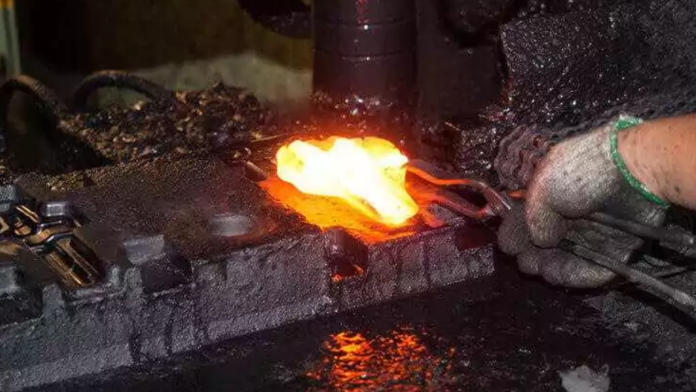Hot die forging is a metalworking method that includes shaping metal workpieces at high temperatures with a die. The primary goal is to increase the material’s flexibility and formability by heating it above its recrystallization temperature. The die, usually constructed of heat-resistant tool steel, dictates the final shape of the forged object.
The procedure begins with heating the metal to a temperature where it becomes malleable, allowing for effective deformation. Hot die forging is used to make various parts, including automobile components (crankshafts and connecting rods), aerospace components, industrial machinery parts, and other designed components.
The die is a heat-resistant steel tool that defines the finished forged part’s shape and dimensions. It is built to withstand extreme heat and pressure during hot die forging. When pressure is applied to the die, the heated metal is placed between the haves and takes the required shape.
What Is The Importance Of Temperature Control In Hot Die Forging?
Temperature management is critical in hot die forging because it directly affects material behavior and final product quality. Maintaining accurate temperatures ensures the metal achieves optimal plasticity, allowing for effective deformation and cavity filling.
Temperature consistency promotes uniform material flow, lowering the possibility of flaws and ensuring the necessary mechanical qualities. Temperature control is critical in hot die forging to achieve exact forms, dimensional stability, and superior strength in the forged components.
Parts Produced By Using Hot Die Forging
Automotive Components
Connecting Rods
Hot die forging is widely used in producing connecting rods, crucial components in internal combustion engines that connect the piston to the crankshaft. The method enables the production of complicated forms while still ensuring the high strength needed to withstand the dynamic stresses within the engine.
Crankshafts
Crankshafts, which transform reciprocating motion into rotating motion in an engine, are frequently produced using hot die forging. This procedure gives the crankshaft, subjected to high loads and cyclic pressures, the requisite strength and fatigue resistance.
Transmission Components
Hot die forging is widely used in producing gearbox components for automotive applications. This procedure is often used to make crankshafts, connecting rods, and gears. Elevated temperatures increase material flexibility, allowing for complicated forms and exceptional mechanical qualities. Hot die forging enhances the dependability and longevity of gearbox components under harsh operating circumstances.
Steering and Suspension Parts
Hot die forging is frequently used to manufacture automotive steering and suspension components. Components such as steering knuckles, control arms, and tie rods benefit from increased temperatures, improving material flow and mechanical qualities. This produces durable and precisely formed parts that ensure optimal performance and safety in automobile steering and suspension systems.
Aerospace Components
Aircraft Engine Parts
Hot die forging is a critical step in manufacturing aircraft engine parts. This method manufactures turbine discs, shafts, and compressor blades. High-temperature hot die forging ensures higher material quality, shape precision, and the endurance required for the extreme conditions encountered within aircraft engines.
Landing Gear Components
Hot die forging is helpful in the production of aircraft landing gear components. Parts such as landing gear struts, connecting rods, and brackets benefit from the increased temperatures of the process, which improves material flow and results in high-strength, precisely formed components. This maintains the structural integrity and dependability of aviation landing gear systems.
Energy Industry Components
Power Generation Turbine Components
Hot die forging is critical in manufacturing turbine components for power generation plants. Parts such as turbine blades, shafts, and discs are forged at elevated temperatures to attain higher material characteristics and precision. This method ensures turbine system dependability and efficiency in power generation applications.
Oil and Gas Exploration Tool
Hot die forging is used to create robust oil and gas exploration tools. The increased temperatures of the process benefit components like drill bits, wellhead equipment, and downhome tools, ensuring excellent strength and longevity. This improves the dependability and efficacy of oil and gas exploration gear.
Final Words
Hot die forging is a metalworking technique in which metal workpieces are produced at high temperatures using a die. This method, prevalent in industries such as automotive and aerospace, increases material flexibility, allowing for complex geometries and remarkable mechanical properties. It is necessary for ensuring the strength and precision of components such as gearbox parts, aircraft engine components, landing gear parts, and oil and gas exploration instruments.








